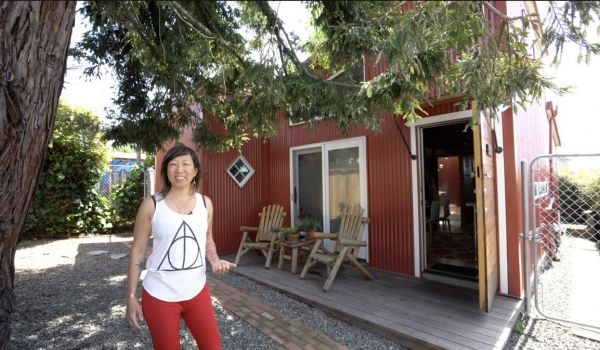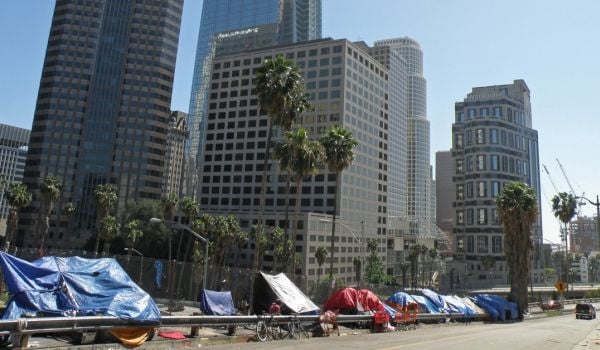EDITOR’S NOTE: The following is an excerpt from the book “Practicing Cooperation: Mutual Aid Beyond Capitalism,” by Andrew Zitcer, published by the University of Minnesota Press. In it, the author offers an ethical and practical guide to “inspiring cooperative practice,” as both response and alternative to extractive models of neoliberal capitalism that exacerbate income inequality and stagnate wages. Contemporary and historical case studies in the book critique existing enterprises, demonstrate the flexibility and robustness of the cooperative model, and suggest pragmatic solutions to the challenges of cooperation. In this excerpt, Zitcer explores the women-led consumer cooperatives in Japan that are deeply committed to sustainability, as well as the history of Black cooperation in the U.S. and elsewhere as an empowering response to racist exclusion. You can purchase the book here.
Worker cooperatives attract a lot of attention in the cooperative literature, perhaps because transforming labor is such a radical departure from the capitalist norm. But globally, consumer cooperatives are more widespread and are able to achieve massive community control of assets, as well as influence the quality of consumer products through education and advocacy. In most cases, the transformation of consumption is an easier first step than the transformation of work, though both are necessary elements of a cooperative democracy.
Women-Led Co-ops Stand Up for Sustainability
One of the most active consumer cooperative cultures exists in Japan, where co-ops dominate the landscape. In Japan, the largest confederation of consumer cooperatives boasts 28 million members and gross sales of 3.4 trillion Japanese yen (over $30 billion in U.S. dollars). Cooperatives are particularly crucial to Japan’s rural economy, where they are the backbone of the agriculture, fishery, and forestry industries.
The Japanese government encouraged the development of cooperatives beginning in the early twentieth century. At times, the state closely controlled cooperatives, particularly in agriculture, in order to ensure food supplies during wartime. Even today, questions remain about the autonomy of the cooperative sector at large, given the direct involvement of the state in the economy and many civil society activities. Nevertheless, the organizing and advocacy of the cooperative societies themselves have given them influence over public policy.
Though formal cooperation has a long history in Japan, the rise of today’s consumer cooperatives commenced in the aftermath of World War II. Their focus on peacebuilding and quality of life set Japanese cooperatives apart from those in other national contexts, drawing on a legacy of collectivism with deep roots in Japanese culture. Cooperatives’ role in food security after the war led to their ongoing concern for fair prices and high-quality goods, echoing the concerns of the Rochdale Pioneers during the Industrial Revolution. The culture of cooperation in the 1950s and beyond was based on a unique cultural concept: the han, or small group buying club. Originally composed of women homeworkers, the han provided social strength and unity at a local level. Each han makes group orders for consumer products and pays as a group, garnering lower prices. But the han is more than just a group purchasing scheme. Each han elects a representative to send to a regional council and, ultimately, a national body that guides decisions about products and works directly with producers. The heyday of the han occurred from the 1960s to the 1990s, before the delivery of products to individual members’ homes and many women entering the workforce. Nevertheless, the system persists and continues to affect food prices and quality through democratic participation.

“Practicing Cooperation: Mutual Aid Beyond Capitalism,” by Andrew Zitcer. Published by the University of Minnesota Press.
The most provocative example of Japanese consumer cooperation is the Seikatsu, or “livelihood” cooperative. Started in 1965, the Seikatsu Club has continued to focus on women’s empowerment and political voice. Today it has over 340,000 members across 21Japanese prefectures. In addition to its consumer activities, the Seikatsu Club operates worker cooperatives, milk factories, and elder- and childcare facilities. The club operates its own stores with a limited number of products deemed to be safe and of the highest quality. Unlike the broader consumer cooperative organizations in Japan, they do not seek to compete with commercial supermarkets but depend instead on the loyalty of their members to purchase previously vetted products. The Seikatsu Club maintains a political analysis that undergirds its cooperative vision, stating: “We demonstrate an alternative life and society, being against mass production, mass consumption, and mass disposal, and by developing consumer materials highly necessary for life, and trying to solve problems of health, environment and safety, as well as members purchasing goods.”
The Seikatsu Club is involved in organizing against genetically modified food and unsafe or unsustainable food practices within Japan and internationally. Such advocacy work has led to the mobilization of co-op members to run as political candidates. These cooperators, mostly women, have succeeded in getting elected to municipal councils throughout Japan. The cooperative movement maintains political neutrality by not backing a particular party, but the presence of its members in official decision-making roles means that the Seikatsu Club can manifest its commitment to food security, social welfare, and environmental protection.
Cooperation Against Racial Oppression
In another example, we look at the history and present-day conditions of Black cooperation in the United States, taking inspiration from this community’s ongoing embrace of cooperation as a tool of self-determination.
One of the most pernicious myths about cooperation in the United States is that Black Americans do not, or cannot, sustain cooperative businesses. In my research, more than one person blamed the failure of cooperative ventures set in Black neighborhoods on the inability of the population to understand or support cooperatives. Contradicting this view are inspiring examples around the country of Black cooperation, including the worker-owned grocery Mandela Foods in Oakland, California, the regional Federation of Southern Cooperatives, and the determination of the people of Jackson, Mississippi, to build a comprehensive cooperative economy. Each of these contemporary beacons of Black cooperation owes a debt to the history of cooperative organizing in America dating back to before the Civil War. Some of this activity originally derives from communal forms of business among the Bantu tribes in southern Africa, inspiring similar behavior throughout the Black diaspora.
Until recently, the history of Black cooperation was fragmentary and largely hidden from view. The determined scholarship of Jessica Gordon Nembhard systematically assembles this history and documents how Black cooperative thought and practice developed over America’s history. Her work demonstrates how cooperation worked even in the era of slavery, including mutual aid societies among enslaved peoples, communes of runaways from enslavement, and cooperation with abolitionists to support the development of communes for freed Black Americans.
Over time, Black cooperation grew and diversified. Much of the growth was fueled by study circles and community training courses in which Black cooperatives imbibed the history, philosophy, and methods of the pioneers of cooperation. This focus on education led to the creation of Black housing cooperatives, credit unions, consumer cooperatives, and worker-owned businesses from Harlem to Gary, Indiana. In the case of consumer cooperation, organizers insisted on the primacy of race, rather than class, in their analysis; this led them to create separate structures outside of mainstream white organizations and unions.
Some of the greatest thinkers in Black history advocated cooperation as a means of economic and racial uplift. The American movement was guided for a time by W. E. B. Du Bois, who used the pages of The Crisis, the monthly journal of the NAACP, to challenge the prevailing economic system through cooperation. Black women organizers, including Ella Jo Baker and Fannie Lou Hamer, were responsible for vital work in the cooperative movement.
Black cooperation also plays a vital role in the economy of the Americas more broadly. Extending beyond the United States, Caroline Shenaz Hossein’s work documents how Black people have reoriented the economy to be inclusive of their needs, even at tremendous risk to themselves. She argues that anti-Black oppression is particularly egregious in the Americas because of the legacy of slavery, colonialism, and persistent racism. And yet, Black social economies in the Americas have thrived since before European cooperative development. The work of Hossein and her colleagues works to redress the lack of Black voices in the community and social economies literature.
One example of Black social cooperation is the use of the susu, or rotating savings and credit association. These money pools consist of people, usually women, who get together and contribute an equal amount of money into a fund on a weekly or monthly basis. The total pool of money, or “hand,” is paid to one member at a time on a previously determined schedule. The pool rotates until all the money is paid out, at which point it may begin again. Susus are based on trust, mutual respect, and mutual aid. They are a response to mistrust or outright exclusion from the formal banking sector. The concept originated in West Africa and is known by many names throughout African and Caribbean countries. It is used in North America today by women who seek to practice grassroots economic cooperation to achieve their personal and community goals.
Black cooperation often confronts white racism and white supremacy, whether arising from being shut out of the nascent organized labor movement or explicitly violent attempts to shut down Black economic self-determination. These outside forces, coupled with a desire to encourage racial solidarity, led the Black cooperative movement to sometimes operate out of sight of the white cooperative world and thus seem less than visible. This focus on self-determination may partly explain why non-Black cooperators in the 2010s scoffed at the suggestion that Black consumers or organizers lacked the capacity to succeed.
The many examples of contemporary cooperation among Black communities and other communities of color constitute convincing empirical evidence to offset those misguided assumptions. Indeed, people of color and women are responsible for much of the recent growth in the cooperative economy. The Black Lives Matter movement recommends cooperative development as a core plank of its economic justice policy platform. National political figures such as Bernie Sanders and Kirsten Gillibrand of New York support worker co-ops and have proposed legislation that increases worker control of companies.
Communities of color are not waiting for a national sea change; they are building the cooperative economy themselves in real time. In Oakland, California, the worker-owned Mandela Grocery Cooperative recently celebrated ten years in business and announced plans to expand to a second location. The Black-led cooperative is thinking carefully about how to navigate expansion amid the gentrification of the Bay Area while remaining true to its politics. In Jackson, Mississippi, activists from the New Afrikan People’s Organization and Malcolm X Grassroots Movement work alongside Mayor Chokwe Antar Lumumba to remake the city along cooperative lines in a project called Cooperation Jackson. Their goal is the creation of a federation of cooperatives, a cooperative incubator, school and training center, and a cooperative bank.
But the work of creating a people-of-color-led cooperative system is as difficult as it is ambitious. The activists behind Cooperation Jackson have tempered their goals with a dose of reality, admitting that it will take up to ten years to create the cooperatives they envision. Other cooperatives have not been able to fully realize their vision. Renaissance Community Cooperative was a community-led solution to the problem of lack of fresh food availability in downtown Greensboro, North Carolina. Despite national attention and strong early sales, it closed after just three years in business. Nevertheless, all of these businesses help change the narrative of the current United States cooperative movement, which is dominated by white voices. Their examples strengthen the cooperative movement, as people of color and low income take charge in organizing the cooperative economy.
Excerpted from “Practicing Cooperation: Mutual Aid Beyond Capitalism,” by Andrew Zitcer. Published by the University of Minnesota Press. Copyright 2021 by the Regents of the University of Minnesota. All rights reserved. You can purchase the book here.

Andrew Zitcer is an assistant professor and the director of the Urban Strategy program at Drexel University in Philadelphia, PA. His research explores arts as a catalyst for community and economic development, and the importance of cooperative practices to foster economic democracy.
















